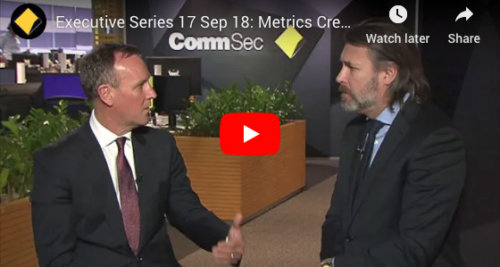Australian Private Credit Opportunities for Global Investors
Australian Private Capital Market Overview – A Preqin and Australian Investment Council Yearbook 2021: In this interview, Andrew Lockhart discusses the opportunity in the Australian private credit market.
What makes the Australian private debt market a unique opportunity for investors?
The growth of the corporate debt market in Asia-Pacific has been impressive. Corporate bond and syndicated loan issuances reached USD 886bn and USD 680bn respectively in 2019 – easily eclipsing Latin America, Middle East, Central Asia, and Africa combined. Australia makes up a sizable and attractive component of this rapidly expanding debt market. In 2019, for example, domestic corporate bond issuances topped USD 5bn and loans touched an impressive USD 76bn. For Australian companies, the loan market is the primary debt market to access financing. From an investment perspective, this means it is significantly larger, more diversified, and more liquid compared with onshore and offshore corporate bond markets.
The private debt market has always been dominated by banks. In Australia, most companies are still unrated – a hurdle to tapping bond markets – and have limited access to sources of non-bank capital financing. Non-bank financial institutions, particularly those operating in fund formats, have traditionally focused on funding higher-yielding opportunities such as private equity sponsor transactions, property mezzanine, or distressed lending, leaving a significant gap in meeting corporate borrowers’ financing needs.
This gap has only widened as Australia’s domestic banks have gradually vacated part of the corporate debt space. Rising regulatory pressure has continued to drive up the cost of funding for these institutions, making it very difficult to generate the required return on equity from corporate lending activities – necessitating more disintermediation. This has created an expanding opportunity set for experienced players, like Metrics, who are large enough to effectively compete with and work alongside banks, but also have the capacity and flexibility to invest across a broader range of private credit instruments, situations, borrower types, and industries.
A common misconception of foreign investors is that Australia is solely a commodities-based economy – but it’s much more than that. From time to time, sectors or industries may fall out of favor, creating market dislocations, or what I like to call mini-credit crunches, or, more commonly, capital mismatches, where very attractive risk/return opportunities can be actively pursued. Australia also tends to be lumped together with the rest of the Asia-Pacific region in terms of investment profile, which distorts the truth.
Australia has some of the most creditor-friendly corporate insolvency laws globally – if not the most accommodative. Enforcement and insolvency processes can be undertaken without court involvement, meaning quicker times to resolution compared with the US and UK, and a greater emphasis on preserving the rights of secured creditors. Furthermore, secured creditors have the ability to appoint their own receiver who collects and realizes the secured collateral to repay the debt owned. This is not possible in the UK, and is very limited in the US. These sorts of creditor protections, coupled with generally stronger lending terms and more proactive controls in lending agreements than many Western markets, presents a unique investment case for international allocators.
How did the pandemic impact the domestic private debt industry last year?
It was a challenging year for the economy as a whole, and no less concerning for the private debt market. Looking back to February last year, Australia was facing a dire trifecta of declining asset prices, rising unemployment, and increasing levels of corporate default. But by April, the picture had started to change. Government policy became highly accommodative, with programs like JobKeeper or JobSeeker and broad-based support for businesses announced. A significant, coordinated response by the Australian Government and the RBA on both the fiscal and monetary front steadied what could have been a protracted period of volatility for capital markets and declines in economic activity.
Interestingly, across the businesses that we lend to, management teams are forecasting stronger performance this year than 2019. Moreover, more than 90% of companies reporting to us are exceeding these impressive 2021 numbers so far. Because of lower interest rates driving demand, performance has been stronger than expected across our commercial real estate borrowers – residential and industrial sectors in particular are standing out positively. This reflects the combination of government policies, RBA market support, and reductions in interest rates, against a backdrop of growing optimism from the roll-out of the COVID-19 vaccine and rising equity and property market asset prices.
What should investors consider when selecting fund managers?
In today’s persistently low interest rate environment, manager selection is key to unlocking yield. First and foremost, investors need to tap into managers that have extensive direct-origination capabilities. This is vital to building quality private debt portfolios through active management of the negotiation process. We also believe that sustainable, long-term relationships with the companies we lend to drive better outcomes for investors. This open communication between fund managers, borrowers, and investors has become even more important after the pandemic.
Second, you need to identify a team with a strong track record through various economic situations. Investors can be comforted by a manager’s deep understanding of intricately complex cash flow and cash conversion cycles. It can also mean that portfolio risk management capabilities are robust, with a manager leveraging these insights to conduct critical stress-testing across different instruments, industries, and borrowers.
Lastly, scale is a key differentiator. The relatively intimate and maturing nature of the domestic private debt market offers significant advantages to fund managers with the size, scale, and capacity to directly originate deals, and can demonstrate value to a borrower.
Looking forward, how do you see the industry evolving?
Competitive dynamics are changing on the back of the industry’s growth and maturation. In 2013, when we launched our first fund, the industry was in its infancy. Since then, we have seen local competitors come to market, raising capital from domestic investors offering similar sources of funding to companies. These teams are typically quite small, and most are highly reliant on banks for deal origination – but they are growing.
At the other end of the spectrum, a rising number of offshore managers come to Australia to focus on the traditional, higher-yielding private debt areas: special situations, distressed, and private equity sponsor funding. As banks continue to cede market share in the lending environment, a larger provision of debt financing will need to come from non-bank financial institutions, so there is still significant room to grow. However, the barriers to entry are material and require scale, meaning consolidation among private credit firms could become more important going forward.
Another material driver for the reallocation of capital within Australia’s private debt market is the rising investor concern around ESG. This has always been a large component of what we do when assessing investment opportunities and credit risk as long-term investors, and Metrics became a signatory to the UN Principles for Responsible Investment in 2019. Private lenders more generally need to do deep analysis around environmental, social, and, in particular, governance risks to understand their exposures – it’s fundamental to credit risk management. Our asset class has a natural affinity for adopting comprehensive ESG practices in line with growing investor demand globally.
About Metrics Credit Partners
Metrics Credit Partners is a leading Australia-based alternative asset management firm specializing in direct lending to Australian, New Zealand, and Asian companies. We are an active participant in the private credit market and manage more than $7bn of investments across listed and unlisted investment funds. We manage a range of unique and innovative investment products, designed to provide investors with access to portfolios of private credit investments generating regular cash income and capital stability.
Other News
Research Paper: Six Trends for Private Credit in 2026
Metrics Credit Partners has released its latest research paper, Six Trends for Private Credit in 2026, exploring the opportunities and challenges…
Metrics Innovate Reconciliation Action Plan
We are proud to share our second Reconciliation Action Plan (RAP), reaffirming our commitment to truth, healing and unity. We…
INSIGHTS
MCP Income Opportunities Trust (MOT) lists on ASX
Sydney, 29 April 2019: The Trust Company (RE Services) Limited (ABN 45 003 278 831) (Responsible Entity) is the responsible…
MCP Master Income Trust wins Lonsec Listed Fund Award
The award came a year after MXT was listed on the Australian Securities Exchange






